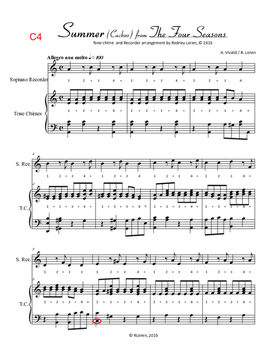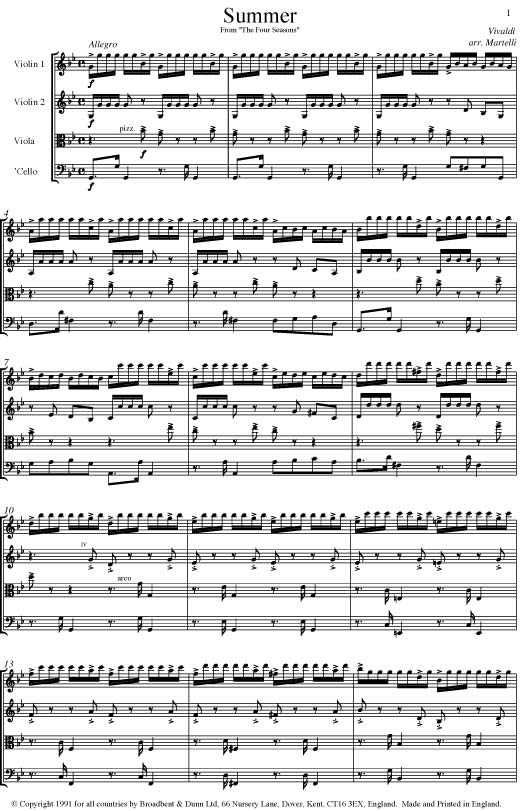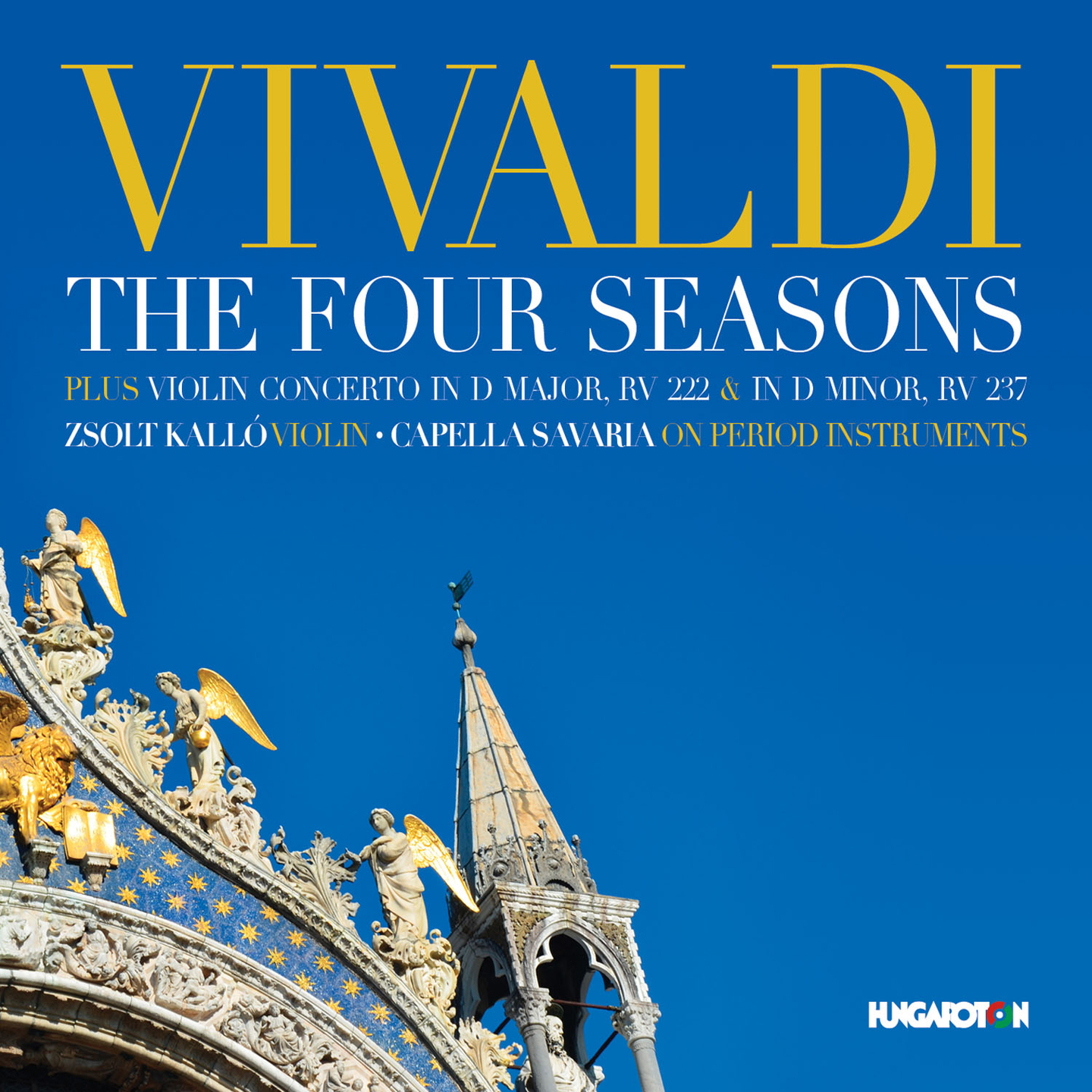

The following Largo depicts “the Rain,” though from the comfort of a warm fireside. Winter: The Allegro first movement is quite hilarious, as witness the inscription: “Dreadful storm – Running and foot stamping because of the cold – winds – chattering of teeth.” Vivaldi’s art of description here reaches its acme. “The fleeing beast – guns and hounds – The fleeing beast is slain,” are all represented with an odd dignity. The last movement, an Allegro, describes the pleasures of the chase.

“The Sleeping Drunkard,” the Adagio second movement, is remarkably lively in spite of its title, suggesting that Vivaldi was carried away with his invention of a beautiful theme. Entitled “Summer Storm,” it is a veritable tempest.Īutumn: The Allegro is inscribed “Dance and song of country folk – the Toper,” begins with innocent rusticity, and then becomes increasingly bibulous. The third movement, a Presto, fulfils the promise of bad weather. The Adagio slow movement is simply entitled “Flies and Bluebottles.” Boldly experimental, the music depicts the harvester in repose with a storm gathering in. Summer: The Allegro first movement, “Languor caused by the heat – the Cuckoo – the Turtledove – the Goldfinch – Gentle Zephyrs – Various winds – the North-Wind – Young Countryman’s Lament,” is absolutely filled with events, somewhat obscuring the Rondo form, but the description is superb. The Allegro third movement is simply inscribed “Country Dance.” The violas become the bass instruments, and delightfully, represent the barking dog with a repeated figure. The second movement, a Largo, describes “A sleeping goatherd – Rustling of foliage – The dog barks – The goat-herder and his faithful dog.” Under the beautiful violin solo, the cellos and harpsichord are silent. Spring: Marked Allegro, the first movement is inscribed, “Spring’s awakening – Song of the birds – The Springs gush out – Thunder – The song of the birds.” In the Baroque Rondo form, this movement is in five sections, fluidly descriptive. The original score has the appropriate phrases printed in. The sonnets themselves are rather pedestrian, at least in translation, but Vivaldi enshrined them in the richest surroundings. The inspiration for The Four Seasons came from a set of four anonymous sonnets, from which Vivaldi took descriptive phrases to direct the development of musical ideas. Vivaldi combined the structure of the solo concerto with the musical depiction of events found in nature, with telling results. The Four Seasons were boldly experimental when they were published in 1725.

Since then, enthusiasm has hardly wavered. At a time when music was comparatively ephemeral, Vivaldi’s Four Seasons outlived musical fashion to such an extent that Rousseau, some thirty-five years after Vivaldi’s death, produced a flute transcription for publication.

Vivaldi, producing in his career something over four hundred concertos, achieved in this set of four linked violin concertos a work of transcendent quality that completely overshadowed not only his own other efforts, but most of the concertos of his contemporaries. Yet The Four Seasons, after some sixty years of regular performance, appears to be as well-loved as ever. Generally, when a work is as resoundingly popular as The Four Seasons, there is a very great danger that it will become hackneyed sooner or later. Le quattro stagioni (The Four Seasons) (1723)


 0 kommentar(er)
0 kommentar(er)
